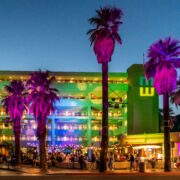The future of the Salton Sea is uncertain. Can it be saved or will the basin in which it resides once again become a dry dustbowl?
Southern California’s relationship with the Colorado River is an uneasy truce. In the Imperial and Coachella Valleys, this has translated into a longstanding struggle as engineers have wrestled with its spirited waters in an effort to provide farmers there with a a consistent flow of water with which to irrigate their lands. In 1905, their victory seemed imminent but the rambunctious river would not be contained. The levees that held it broke and the water flowed into a dustbowl that straddled the Imperial and Coachella Valleys. The filling of this basin, which had been dry for about four centuries, was the happy accident that created the Salton Sea.
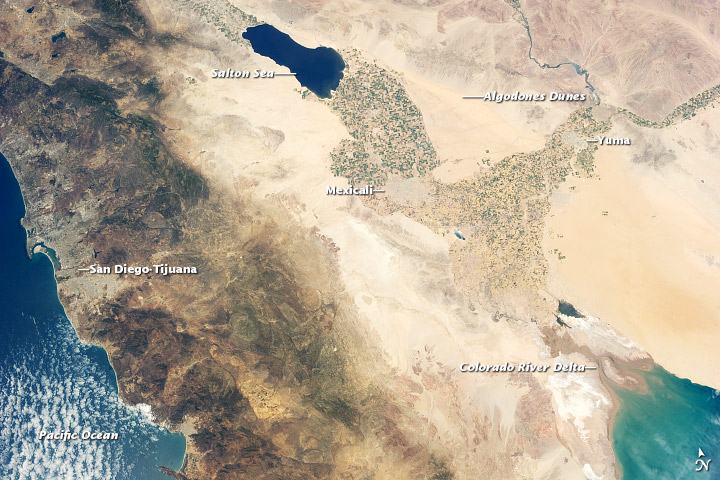
This was not the first time a body of water had been created in this area. There is evidence that the cycle of filling and evaporation has happened before; the last time was just around the time that the country was first being settled and explored in the 1600s. But this time, man intervened.
Over the following decades, the newly formed lake became home to migratory birds, fish and wildlife. Gus Eilers, who first saw the Salton Sea in 1926, was entranced by its blue water and the bucolic setting. He envisioned a beautiful resort, a place for boating and water skiing, fishing and sailing.
Eilers moved forward with his project. The town he created was called Date Palm Beach. Though the stock market crash of 1929 put a crimp in Eilers’ dream, undeterred he pushed forward. World War II was a boon for Eilers; soliders stationed at nearby Camp Young enjoyed the water on their days off and, once the war was over, returned with their families. In 1946, Eilers sold the resort to C. Roy Hunter. Hunter renamed the location Desert Beach.
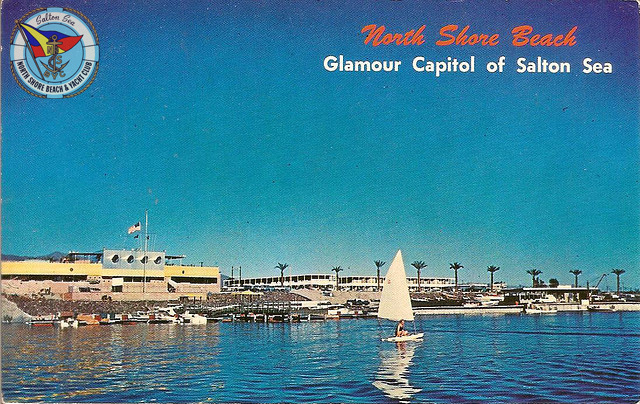
But, even in its early years of existence, there were indications that the future of this body of water was tenuous at best. The fresh water of the Colorado River had mixed with the salt at the bottom of what, up until 1905, had been known as the Salton Sink. Each year, as the water receded just a little bit more, it became saltier and saltier. To compound the problem, in 1928, Congress acted to designate the lands within the Salton basin as storage for wastes and seepage water from irrigated lands in Imperial valley. Though the environmental impact of this decision would not be known for decades, it set the stage for the challenges the area faces today. Even as early as 1914, the fish that had been dragged into this newly formed lake on the back of the Colorado River’s rushing waters were beginning to die off. Fish were brought in in an effort to repopulate the waters.
The years when the sea swelled — bloated by run-off agricultural waste water and unusually heavy rain storms — were no better. This is what Hunter encountered as the waters began to rise in 1948. By 1953, his dreams were literally being washed out to sea.
Hunter blamed his troubles on the Coachella Valley Country Water District and the Imperial Irrigation District. A judge upheld his accusations but, unfortunately, it was too late for Hunter, who had died before the court’s ruling.
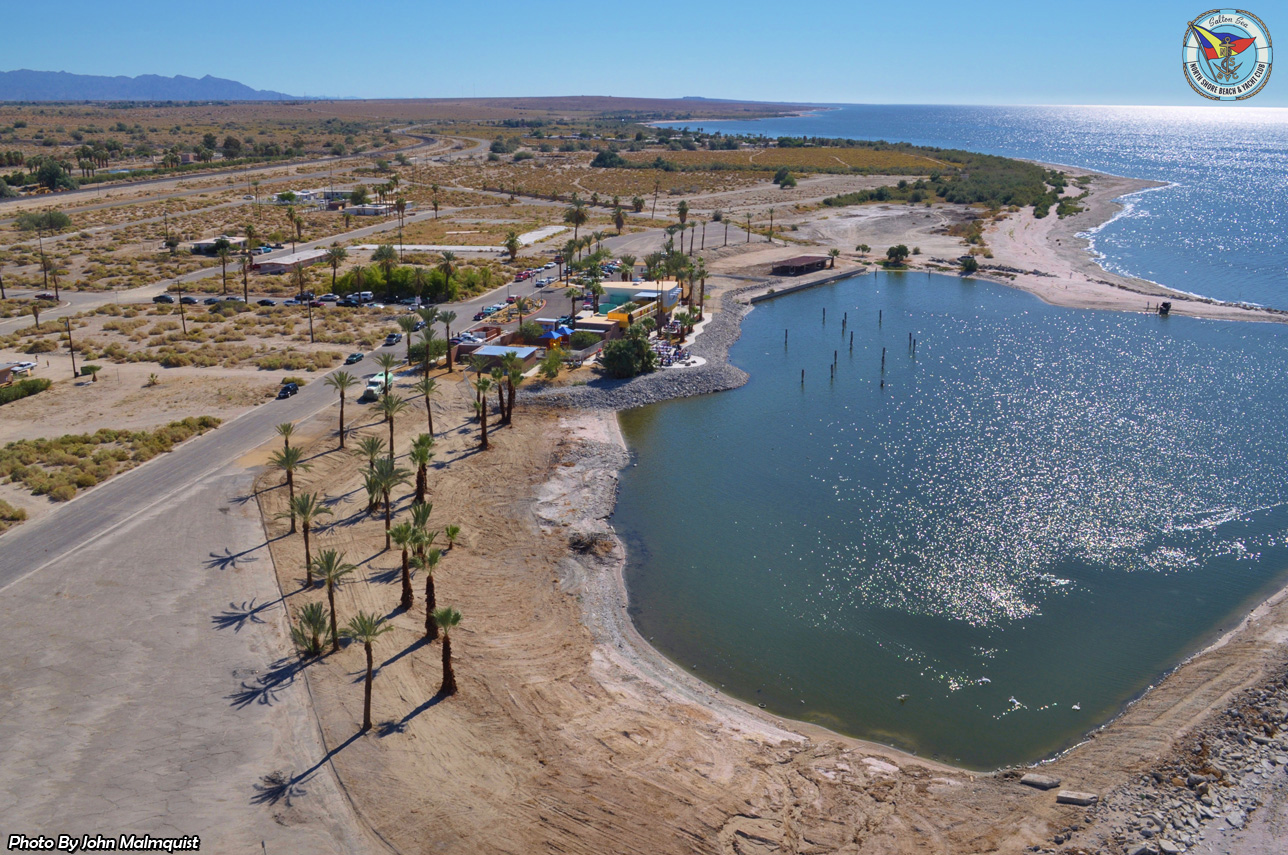
In 1958, developers Ray Ryan and Trav Rogers bought the land that became the town of North Shore. They began selling off plots of land and struck ground on the Albert Frey-designed North Shore Beach & Yacht Club (1959), the town’s centerpiece. Described as a two million dollar marine paradise, it beckoned celebrities from Palm Springs, less than an hour away, to enjoy the pleasures of lakeside life. Jerry Lewis, Frank Sinatra, The Beach Boys and The Marx Brothers were some of the stars who kept boats here.
But the capricious Salton Sea had her own ideas. In 1981, the Yacht Club shuttered after a severe flood wiped out the jetty, making it impossible for boats to dock there.
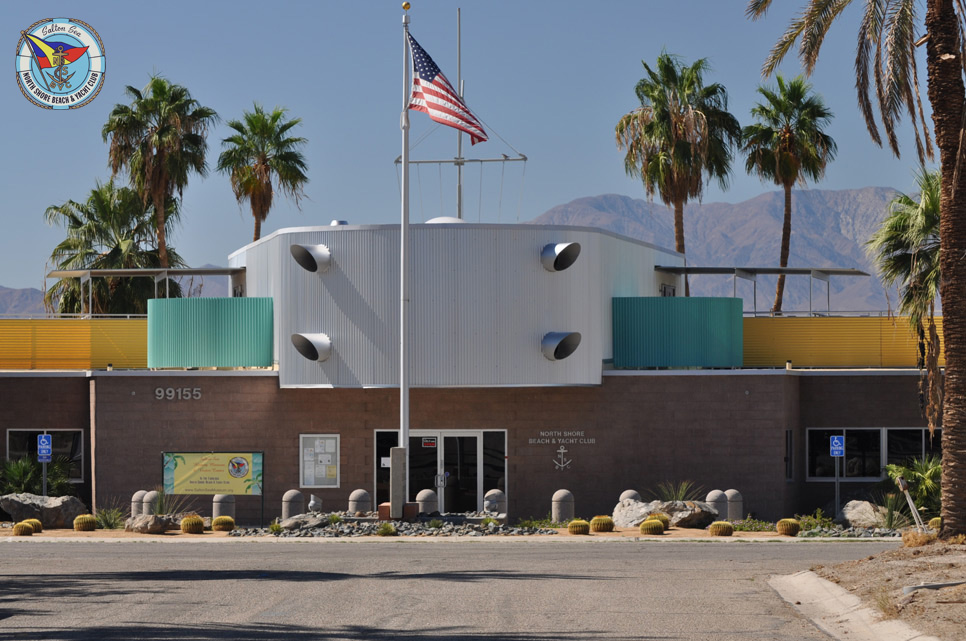
Today, due to the effects of California’s severe and lengthy drought, the Salton Sea has, yet again, receded, concentrating its water’s toxicity and salinity. Much of its fish and wildlife has died or moved on to more hospitable environments. Dust from the Sea’s shores swirls into the air, creating respiratory problems for nearby residents.
As Southern California races to save the Salton Sea from drying up and dying, its future is uncertain. Who will be the victor this time? Will it be Southern California or will it be Mother Nature, sucking the Salton Sea dry, perhaps not to return again for another four hundred years?
Experience the Salton Sea in person with “Party at the Yacht Club” on February 12 – a special Modernism Week event at Albert Frey’s North Shore Beach & Yacht Club, featuring the premiere of the Salton Sea Art Show by SEArtists. Limited tickets still available online.


